First of all, what is back focus? Or this metal back distance? It doesn't quite have the same use in astrophotography as traditional astronomy, nor is it in reference to a Norwegian metal band. Instead, metal back distance has to do with the spacing requirements when using any sort of corrective optics.
A note about the terminology when discussing this topic: the necessary spacing for an imaging train has been described using different terms, including "Metal Back Distance" and "Back Focus." This can be further complicated by trying to delineate between systems that use a separate corrective element versus telescope systems that either have their corrective elements integrated, or those that don't use corrective optics at all. We are going to simplify it here and say this: what we care about is the distance between the last lens element in your system to your camera chip. For this purpose, we often use "Metal Back Distance" and "Back Focus" interchangeably.
Corrective optics are additional pieces of gear that help fix optical aberrations that are present in most telescope designs. For example, refractors suffer from field curvature, and so need field flatteners to correct for this. Newtonians often suffer from coma, and so a coma corrector is used. These pieces make it so that your stars are pinpoint and your images are sharp across your entire sensor. As a note, telescopes that are designated as "astrographs" have these corrective type elements built in, or are well corrected through their design such that no additional corrective optics are needed.
There is more to consider when planning and connecting your full imaging train. These corrective optics work best at a specific distance away from their glass elements, most commonly 55mm. If your camera chip is too close or too far away, then the elements will not actually perform their intended corrections. If your sensor is say at 48mm or at 67mm away, you may still see curvature, or still have coma affecting your images.
To get the most pristine final images, we can help you figure out the distances in your entire imaging train and get the adapters as needed to ensure your camera is at the ideal distance from your corrective optics. You first need to know the metal back distance requirement of your telescope or corrective optic piece. Then, add up the spacing distances of all of your pieces in your optical train to your sensor. This includes the depth from the front of your camera to the chip itself, the depth of a filter wheel or off-axis guider, and the depth of any thread size changers. If after adding all of that up you are short of the ideal metal back distance, you need additional spacers. If you add all of the above up and you are too far away from your corrective optics, you will need some thinner adapters or accessories, or figure out a corrective optic that provides more metal back distance.
We've created a drop-down tool below to be able to help figure out what your spacing requirements are on your system. It should now be easy to calculate the precise spacing adapters that will unlock the full potential of your imaging train.
Below the drop-down tool is a set of common M42 and M48 spacers to help get you on your way to sharp images. If after inputting all of your values you require some spacing that is not available with the standard spacers, never fear! Contact us and we can help design and order a custom adapter for any imaging train requirements.


Please ignore my prior post… for some reason I didn’t see the Canon DSLR in the camera list… my bad!
Could this calculator include the standard Canon DSLR (i.e. T3i) as well? I am using a Meade f/6.3 focal reducer, ZWO manual filter holder. Thanks
Does the calculation take into account the center/tilt ring for QHY cameras when used with QHY CFW3-L filter wheel? For example, in order to connect a QHY 600M camera to the QHY CFW3-L the camera’s center/tilt ring must be bolted to the filter wheel and part of the center/tilt ring is recessed.
I have been struggling with getting the correct back focus distance between my ES 3” FF/0.7x FR and QHY600M camera.
My current optical train is as follows:
QHY600M
QHY CFW3-L with Center Tilt Ring screwed onto FW (M54i)
Baader 2” mounted CCD filters
9mm threaded spacer ring (M54)
10mm Precise Parts Adapter (Camera M54/FF/FR M72)
ES 3” FF/0.7x FR
ML CFL 2.5” focuser with Shaft Lock and v2 Stepper Motor
ES 127mm FCD-100 Aluminum Tube
My images with the above configuration have stars in each corner pointing towards the center of the sensor and heavy vignetting, so it appears I need to add more space.
If I am correct can you let me know how much additional space I need to add? I am embarrassed to say that I have been trying to figure this out for over 3 months. Any assistance you can provide would be very much appreciated.
Sincerely,
Jennifer
Dominic -
Thank you for reaching out! I’ve sent you a PM with a response for you. Please let me know if you have any further questions!Clear Skies,
Matt